
It all began innocently when I was four and a half years old. My mother and I were sitting on a bus on our way to visit my grandparents. I was particularly excited, having not seen them since our move to another part of town. As I sat there, I began to curiously scan the people around me. My eyes rested on an old man sitting directly across from me. Slowly moving my gaze from his stubby gray beard, to his wrinkled face, then up to his grey eyes, I suddenly found myself inside his body. Looking through his eyes, I could feel his sadness and loneliness as if I was him. Before I knew it, just as abruptly, I was back in my own body, looking at him.
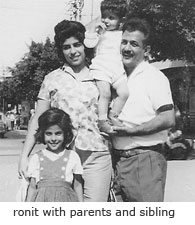
I continued looking around me. This time, my eyes caught the sight of a pretty woman sitting at the back of the bus. Examining her face, her jewelry and her hair, again, at once, I was inside her body, sensing and seeing through her eyes. When I returned back to my body, a thought crossed my mind – “Oh now I understand, we all have different faces and bodies, but the same thing is looking through the eyes.”
There were no light bulbs flashing or bells ringing. The whole experience didn’t last for longer than a minute, yet the thread of my life is imbued with this perspective.
It was not until after my family moved from Israel to the States, that this extraordinary capacity to feel people became a serious liability for me. It started five months after we arrived with the news of Martin Luther King’s assassination. While I vividly remember feeling great sadness when my father told me that President Kennedy was assassinated, it did not have the same impact on me as King’s death and later Bobby’s. This was because there was no television in Israel. I was only exposed to television when we came to the States. I remember sitting alone in front of the TV for hours, crying hysterically, watching the images of their assassinations. Although I was only eleven years old, and still a foreigner who hardly knew anything about them, I felt them to my core; it was as if a part of me died.
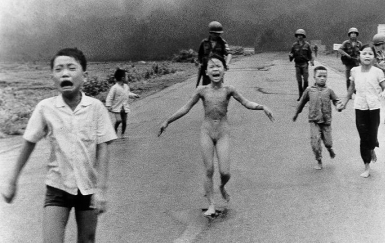 In the following years, my mind, heart and soul were continually bombarded by TV images of dying people in Vietnam, starving children in Biafra and the myriad of violent actions in the States against black people, demonstrating students and others. I could not separate them from me; their suffering was mine. Everyone around me seemed able to go on with their lives, apparently oblivious to all the pain surrounding them. I could not. Tortured and grief stricken, unable to share my distress with anyone, I gradually began to feel alone and disconnected from the world. At fifteen, I stopped watching TV or socializing with anyone. After school, I withdrew into my room to do my homework and read. Gratefully my English improved enough to allow me to read more sophisticated books. I focused on philosophy and history. Reading had always been my greatest source of joy. In Israel I would typically read two books a day. My parents would have to fight with me to put them away at bedtime. Reading helped me for one year, but the pain of isolation became too much. I finally decided that I did not belong on this planet. I concluded that since I am the only one who is so affected by others’ pain, I must be from another planet.
In the following years, my mind, heart and soul were continually bombarded by TV images of dying people in Vietnam, starving children in Biafra and the myriad of violent actions in the States against black people, demonstrating students and others. I could not separate them from me; their suffering was mine. Everyone around me seemed able to go on with their lives, apparently oblivious to all the pain surrounding them. I could not. Tortured and grief stricken, unable to share my distress with anyone, I gradually began to feel alone and disconnected from the world. At fifteen, I stopped watching TV or socializing with anyone. After school, I withdrew into my room to do my homework and read. Gratefully my English improved enough to allow me to read more sophisticated books. I focused on philosophy and history. Reading had always been my greatest source of joy. In Israel I would typically read two books a day. My parents would have to fight with me to put them away at bedtime. Reading helped me for one year, but the pain of isolation became too much. I finally decided that I did not belong on this planet. I concluded that since I am the only one who is so affected by others’ pain, I must be from another planet.
I decided to stop my suffering by ending my life. The plan was to feign illness, stay home from school, and when my mother went out shopping, to jump off my building’s roof. The decision brought me great relief. The day of implementing the plan arrived. When my mother left the apartment, I got dressed, and began to put my shoes on. I remember feeling numb but resolute. I started to put my second shoe on; suddenly I felt a force hit my chest. Startled and disoriented, I fell backwards onto the bed. Then I heard a voice bellow within me, “No! There is a purpose.” Immediately, images of suffering people flashed across my eyes. Like a movie, frame by frame, the images seemed to tell a story of an empath who has been given the gift of acutely feeling others so that she can naturally understand them and help alleviate their suffering. It all came together- there was meaning to the pain- my mission in life is to embrace my gift and see it as a tool for helping people.
It took me a while to re-enter my social fabric, and when I did, it was with unwavering confidence and focus. As I actively began to expose myself to greater numbers of individuals, feeling and listening to them from a space of a healer, I came to appreciate and understand how difficult it is to be human. But I still did not know how to use my empathic abilities in an effective way. One thing I did realize is that since we are all one, the better I understood myself, the more I could help others. I set out to learn as much as I could about myself.
My first and greatest teacher was my son, Leor. 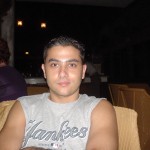
From the moment he was born I knew my love for him would stretch me in ways I could not imagine. Participating in the development of this innocent, gentle, playful, and ever seeking learning child, provided me with a new fresh lens from which to perceive myself and the world around me. The lessons of humility, compassion, acceptance and forgiveness took on new meaning. My continual growth as a mother and a woman fortified the mission of my soul.
My mission to feel, understand and help my kindred spirits became the anchor and the driving force of my life. Being able to access this grounded inner directive within me as an informant, allowed me to make some very difficult and “apparently frightening” choices along the way. As you read the rest of my story, I think you will see this force throughout my life.
I chose to study psychology and social work. My first job out of Social Work school was in a locked unit of an inpatient psychiatric hospital. I was part of several research teams studying the efficacy of certain medication for schizophrenic patients. My role was to properly diagnose the patients in the study to insure they meet the criteria for schizophrenia, as well as, to support them and their families through their hospitalization. This was a wonderful place for me to start as it taught me so much about the workings of our brain. With that came the realization that these patients were not seen or treated as human beings. Their symptoms: visual and auditory hallucinations, bizarre behaviors like flailing their arms and screaming, flat affect and disconnection from others, caused most of the staff to avoid or ignore them. Feeling their tormented souls, my work was to break through their overt symptoms and reach them on their deepest level. I spent hours every day listening to them, asking questions about their experiences and teaching them about the malfunction of their brain chemistry and its effects on their perceptions. One by one, they began to experience some relief partly by the mere fact that someone cared about them, and partly because someone took the time to explain to them the source of their symptoms. I was able to forge warm and meaningful relationships with most of them, greatly facilitating their improvement upon leaving the hospital.
When my immediate supervisor left and a new supervisor took over, I was called into his office and promptly ordered to stop spending so much time with the patients. He argued that my time would be better used doing more diagnostic evaluations. When I refused, I was hauled into the head of the department’s office and again ordered to stop speaking with the patients. At the time, the head of the department was one of the top researchers in the country, revered by all. He was a tall man and as he hovered over me demanding that I do what he says, I looked straight into his eyes and told him he could tell me what to do but I don’t have to listen to him. I will never forget the shocked look on his face. I don’t think anyone had ever disobeyed him before. I knew my job and my income were on the line, but my commitment to being there for the patients was my number one priority. Although he did not fire me, I realized it was time for me to find another place to work.
Within a month a position at the Visiting Nurse Psychiatric Mobile Crisis Unit fell in my lap. It turned out to be the most profound practice of my life. After nine months I was promoted to head the program. Our mission was to reach out to help individuals and families experiencing severe emotional and psychological distress. We covered the entire borough of Queens, working with people from all social, economic and ethnic backgrounds. The level of suffering I encountered every day remains unspeakable. One day we would be called in to help a pregnant young woman whose husband had shot himself in front of her, then would travel across town to meet with an elderly woman living in squalor, unable to pay for her medicine. In the morning I might counsel parents trying desperately to help their schizophrenic child, and in the afternoon would be a lifeline for the children of a drug addicted mom prostituting herself to get her next high. Another day I would counsel the parents whose child died when a tree fell on his school bus. From the AIDS or cancer patient in hospice to the children who are trying to keep their father suffering from Alzheimer disease safe, the victims of the first World Trade Center bombings, or the families of the victims on Flight TWA800 – I felt it all.
Every day I experienced the power of intimacy that exists between human beings when we are stripped down to our emotional nakedness.
When in crisis, when in dire pain, when in despair, we humans let down our personas and our defenses. We relate to each other from an open and authentic space, no longer consumed by the need to impress or look good. It is in the presence of death, physical and psychic, that we drop all pretenses and allow our true essence to come through. It was here that I discovered the depth and breadth of the human spirit. It was also here that I came to understand that we humans hate change and are not inclined to seek it even when living under the most horrific conditions. It is not until the conditions become so severe or impossible to sustain that we are forced to seek change.
In my work at the Crisis Unit I was confronted by many bureaucratic systems which rather than thoughtfully providing assistance and solace to suffering people, ended up operating as uncaring machines. Inspired by my clients’ resilient spirits in the face of incredible misfortunes, I undertook the task of appealing to the hearts of clinicians, doctors, insurance agents and others, often successfully bringing out their compassionate heart. My greatest achievement involved fighting to expand our services. It was during New York City’s budget deficits when most social services were getting cut. Armed with documentation from clients’ testimonials and other supportive people, we convinced the Department of Mental health to provide the funding to double our services.
During my eighth year working at the Crisis Unit, a chance encounter with a Belgian human rights artist on the streets of New York dramatically changed my life. Frank Liefhooge’s work captured my imagination on a whole new level. The way he used art as a vehicle to help ease some of the suffering around the world: feeding and playing with poor children in Moscow by creating a cake mural in the main square; or teaching art to crippled children in India. He told me about his current concern: the horrific tortures the Tibetan people were experiencing at the hands of the Chinese Government. I had been concerned about this issue for several years and his description galvanized my desire to get involved in some way. My immediate reaction was: “what can I do to help?”
Frank asked me to help him produce a world-wide project that would invite artists to create works of art to bring attention to plight of the Tibetans. Although his ideas were somewhat vague and confusing, I heard my inner voice beckoning me to jump on board. By the time he left for Belgium a few days later, I was fully committed to the project. The whole thing was outrageous and yet it felt right.
Frank called me a month later to inform me that the European Parliament had agreed to coordinate the project with us. I could barely contain my excitement. “But what exactly are we going to do?” I asked. “Don’t worry,” he said, “we will figure it out. I will call you back when I have more information.” I wanted to scream “Don’t worry; are you kidding me?” All I knew was that we had two years to pull together an international movement. But I decided to just flow.
Details about the project began to trickle in, but the whole thing still seemed unreal until I received a letter from the European Parliament requesting my presence in Strasbourg, France, to meet with members of the Parliament and H.H. The Dalai Lama to discuss the worldwide project for Tibet. I didn’t know what hit me. Was this really happening or was I dreaming?
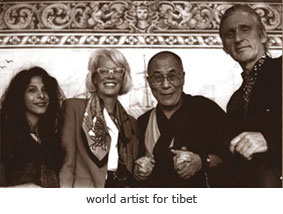 I accepted the invitation and began one of the most remarkable adventures of my life. I resigned from my job at Mobile Crisis to fully devote all my time, energy and money to the project. Within the next year and a half, with the help of my son and many other inspired individuals, we created the web site and brochures; networked with thousands of artists, celebrities, museums, galleries, theaters and clubs around the world, and coordinated the production of hundreds of multimedia events in 45 countries. The response from the thousands of artists who stepped up to donate their time, money and energy was overwhelming and again served as an example of the beauty of the human spirit.
I accepted the invitation and began one of the most remarkable adventures of my life. I resigned from my job at Mobile Crisis to fully devote all my time, energy and money to the project. Within the next year and a half, with the help of my son and many other inspired individuals, we created the web site and brochures; networked with thousands of artists, celebrities, museums, galleries, theaters and clubs around the world, and coordinated the production of hundreds of multimedia events in 45 countries. The response from the thousands of artists who stepped up to donate their time, money and energy was overwhelming and again served as an example of the beauty of the human spirit.
Among the many generous and kind artists who contributed were Yoko Ono, Richard Gere, Francesco Clemente, Alex Grey, Leon Golub, Ultra Violet, Phillip Borges, Bread and Roses, The Beastie Boys, dancers from Alvin Ailey, Merce Cunnignham and New York City Ballet, and singers from The Opera of Paris. art4tibet1998.org
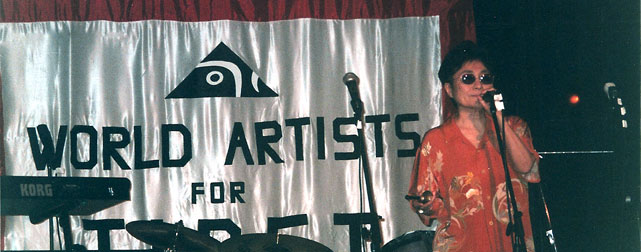
Millions of people around the world were exposed to our events, leading to greater awareness and support for the Tibetan plight.
At the completion of our project, I was confronted with the need to earn an income. Determined to make enough money so that I can use my time and energy to continue devoting myself to philanthropic work, I started looking toward the corporate world. At a loss for how to start, I reached out to the printer of the World Artists for Tibet brochures. I had not spoken to him for several months, but I remembered him telling me that he really respected my organizational work and if I ever needed a job he would gladly hire me. I started working for him the day after I called him. The work evolved into a consulting engagement focused on helping him bring out the best in his employees.
 Several months later, after stabilizing his company, I moved into another company and then another. I created my own corporation, Inside Solutions, and ventured into the dot com world to help CEOs understand and appreciate the value of their employees while inspiring the employees to step up and deliver their best work. I applied two key principles: directing people to go within themselves to discover their own abilities and power, and fostering working environments that communicate appreciation for the contributions of individuals. My work was written up in Fast Company magazine, and my business really began to take off.
Several months later, after stabilizing his company, I moved into another company and then another. I created my own corporation, Inside Solutions, and ventured into the dot com world to help CEOs understand and appreciate the value of their employees while inspiring the employees to step up and deliver their best work. I applied two key principles: directing people to go within themselves to discover their own abilities and power, and fostering working environments that communicate appreciation for the contributions of individuals. My work was written up in Fast Company magazine, and my business really began to take off.
The instant success I achieved afforded me the ability to pursue my next venture, producing a film based on an autobiographical book by Ken Wilber. The book, Grace and Grit, recounts Ken and his wife’s struggle with her cancer. In an open and often brutal and raw manner the book details the physical, emotional and spiritual journey they were forced to embark on in the service of their love. Before reading Grace and Grit, I had already been a great fan of Ken’s, having read five other of his books. This powerful book affected me to my core. Its naked humanity resonated with my heart and compelled me to contact Mr. Wilber to inquire as to why this book had not been made into a movie. Through a mutual friend, I was able to reach him only to find that he was in the process of bringing a team together to adapt the book to the screen. He asked me if I wanted to be part of the team, and I quickly agreed.
We all met at his house in Boulder, Colorado. I cannot describe the excitement within me as I arrived at the home of the most influential philosopher of our time, and my favorite living writer. By the end of the weekend, it became apparent to both him and me that the team members were not getting his spiritual message the way he intended. Recognizing my level of understanding and my passion for the story, he offered to sell me the rights to the book. Although I had no prior knowledge or experience in film production, I took it on with fervor. I spent the next four years writing the screenplay, talking to actors and actresses, hiring a director and fundraising. This odyssey took me from Hollywood to Sundance to Cannes, France. In the process, I met and studied with generous individuals from the industry who guided me through the maze of movie making. Unfortunately, I was unable to realize this vision. Every production studio required me to release the creative rights for the final cut. Since Ken had entrusted me with the telling of his story, I could not surrender that responsibility to some studio head. With much pain, yet complete peace, I chose to return the rights to Ken.
While working on the film project, I simultaneously worked with Ken and many others on the development of the Integral Institute. The objective of this institute is to promote an integral, more comprehensive understanding of how we humans operate on every level of our being and every level of human endeavor. This institute has since grown into a major force committed to forwarding humanity’s consciousness.
In 2001, I went back to counseling individuals and families. It actually happened without intention. It began when I agreed to work with a friend’s niece who needed some direction after graduating from college. Working with her instantly brought me back home: helping individuals find peace and love in the midst of life’s challenges. However, I was now equipped with the incredible experiences I had garnered over the years, which have expanded my heart, mind and spirit on a whole new level. I discovered a novel and transformational approach to working with people. The results I got with my clients were fast and remarkable. Within a few months I was providing counseling full time.
In the background of my spiritual connection to our oneness, and with an open heart, I share with my clients everything I know about what it means to be human. I place great emphasis on normalizing their experiences by teaching them to recognize the machinations of their brains. Understanding how their brains work on a physical, intellectual, emotional and spiritual level helps them see that most of their insecurities and obstacles are due to early childhood wiring. I then guide them through the process of actually re-wiring their brains’ reactions and provide them with tools for establishing more effective and powerful responses that forward the needs of their adult, higher selves.
Since most of our perceptions and behaviors are unconscious and automatic, learning how to rewire ones brain is extremely challenging. I found that the best way to facilitate this process is to invite as many family members or significant others to work with me and each other. This way I can get them all on the same page, and show them how to reflect to each other their automatic reactions. Because they are all interested in growing and rewiring, they are more equipped to receive these reflections and use them to intercept their reactivity. Once they are able to intercept their automatic reactions they are poised to replace them with a more conscious and productive response. (see philosophy for more detail)
In 2004, one of my clients, knowing my history of social & political activism, connected me with a project working on promoting peace in the Middle East. I joined this project and went to Israel and the Palestinian territories to meet with several officials in the hope of bridging the large differences between them. Being an Israeli, and a compassionate student of both peoples’ narratives, I wanted to help them recognize our common ground as humans rather than our superficial differences. We met with many wonderful individuals on both sides who clearly want to work toward peace. The trip gave me an even deeper appreciation for the pain both communities are in, and that the same system that causes us pain at an individual level is also responsible for communities’ pain. There is a tremendous amount of work that needs to be done to help these groups heal and override the wiring from their long history of strife and distrust.
I came back from that trip with a new sense of purpose; I needed to expose more people to my work, and take it from the individual to the community level. For years people had asked me to write a book about my work and I had resisted. The primary reason for my resistance had been my belief that self-help books, while essential to opening minds, are not enough to bring about real transformation. Real transformation requires a deep understanding of how our minds work and applying that knowledge through practice in our day to day life. I needed to create a more powerful and interconnected platform.
This brings me to the present. After two years of working with friends and family on developing a venue that could optimally transmit my work to as many people as I can, I have come up with an innovative concept in the field of self-help and personal transformation. Since it is so novel and obviously experimental, I have decided to use ronitherzfeld.com as a vehicle to evolve this platform. It will ultimately encompass several other websites and the full range of media and technology. It will provide individuals with a set of tools to help us all evolve toward the next stage of human being – conscious, compassionate and interconnected.

